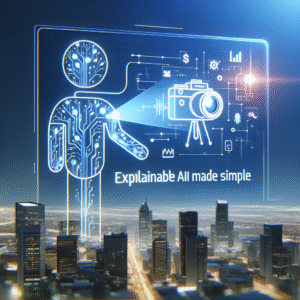Have you ever thought about how technology has transformed the way we learn? It’s incredible to think about the innovations that are reshaping the educational landscape. From virtual classrooms to gamification, technology has made learning more accessible, engaging, and personalized. Let’s dive into some of the most impactful tech-enabled educational innovations that are shaping the future of learning.
The Rise of Online Learning Platforms
With the rapid advancement of technology, the emergence of online learning platforms has been a game-changer. I remember the first time I heard about massive open online courses (MOOCs). They provided anyone with an internet connection the opportunity to learn from prestigious universities around the globe.
What Are MOOCs?
MOOCs are courses that offer free or low-cost access to a wide range of subjects. They often include video lectures, readings, and exercises. Organizations like Coursera and edX lead the way in providing quality education to millions.
| Platform | Key Features | Notable Partnerships |
|---|---|---|
| Coursera | Courses from top universities and companies | Stanford, Google |
| edX | Verified certificates, MicroMasters programs | MIT, Harvard |
| Udacity | Focus on tech skills, Nanodegrees | Google, AT&T |
These platforms have made learning accessible to people who, in the past, may not have had the chance. It’s thrilling to think about how many individuals have gained valuable skills and opened new career paths.
The Impact of Online Learning
The flexibility of online learning means I can study at my own pace and fit education around my schedule. This is particularly beneficial for those balancing work and family commitments. The ability to learn anytime and anywhere makes education more inclusive.
Additionally, online forums and discussion groups on these platforms enable rich interactions among learners. I often find that engaging with others enhances my understanding of complex topics; sharing different perspectives pushes the boundaries of my knowledge.
Gamification in Education
Have you ever played a game to learn something? I have, and I found it quite effective! Gamification in education combines elements of game design with learning to make the process fun and engaging.
What Is Gamification?
Gamification is the application of game-design elements in non-game contexts. In an educational setting, this could mean incorporating points, badges, or leaderboards to encourage participation and engagement.
| Element | Description | Purpose |
|---|---|---|
| Points | Earn points for completing tasks | Encourage participation |
| Badges | Visual recognition for achievements | Motivate and acknowledge progress |
| Leaderboards | Ranking system based on performance | Foster competition and engagement |
In my own learning experiences, I found gamified platforms like Kahoot and Quizlet make studying more enjoyable. They turn what could be mundane memorization into an exciting challenge, sparking my interest in the subject matter.
Benefits of Gamification
Gamification addresses some of the critical challenges we face in education, such as disengagement and lack of motivation. By making learning fun, students are more likely to absorb and retain information. I’ve noticed that when I enjoy the process, I’m more present and eager to learn.
Moreover, gamification fosters a growth mindset. As I work towards earning badges and climbing leaderboards, I experience a sense of accomplishment that keeps me striving for more. It’s all about creating a positive feedback loop that enhances my learning journey.
Virtual and Augmented Reality (VR/AR) in Education
Have you ever imagined walking through a historical site without leaving your home? Virtual Reality (VR) and Augmented Reality (AR) allow for such immersive educational experiences.
Understanding VR and AR
- Virtual Reality (VR) immerses the user in a completely digital environment, often using a headset.
- Augmented Reality (AR) overlays digital information on the real world, typically through smartphones or tablets.
| Technology | Definition | Applications in Education |
|---|---|---|
| Virtual Reality | Immersive digital experiences | Simulations of historical events |
| Augmented Reality | Interactive overlay of digital data | Anatomy lessons, interactive maps |
I recall a time when my class used VR headsets to explore ancient Rome. Walking through a digital Pompeii was breathtaking. I felt like I was experiencing history firsthand, which made the learning unforgettable.
The Advantages of VR and AR
The use of VR and AR in classrooms opens up a world of possibilities. It caters to various learning styles, allowing visual and kinesthetic learners to thrive. When I engage with content in an interactive manner, I retain information much better than through passive listening.
Additionally, these technologies provide a safe environment to practice real-world skills. For example, medical students can perform virtual surgeries without any risks. This hands-on experience enhances their confidence and competencies before they even step into a real operating room.
Artificial Intelligence in Education
Could you imagine having a personal tutor available 24/7? With advancements in Artificial Intelligence (AI), this is becoming a reality. AI can offer personalized learning experiences tailored to individual needs, making education more effective.
What Is AI in Education?
AI in education utilizes algorithms to provide insights, adapt learning materials, and assess student performance. Some systems can learn from a student’s progress and adapt content accordingly.
| AI Application | Functionality | Examples |
|---|---|---|
| Chatbots | Provide instant assistance and feedback | Duolingo, Microsoft Teams |
| Learning Analytics | Analyze data to improve teaching methods | Edmodo, Canvas |
| Personalized Learning | Tailor content to individual learning styles | DreamBox, Smart Sparrow |
I have found AI-powered learning apps exceptionally helpful in providing immediate feedback. When practicing a new language, for instance, applications like Duolingo recommend exercises based on my performance, helping me focus on areas that need improvement.
Benefits of AI
The most significant advantage of AI in education is its ability to personalize the learning experience. Each student learns at their own pace, and AI can adjust the learning pathway accordingly. I appreciate this personalized feedback, as it helps me stay motivated and engaged.
Moreover, AI can reduce the administrative burden for educators, allowing them to focus on teaching rather than paperwork. Technology can streamline grading and assessment processes, giving teachers more time to connect with students.
Collaborative Learning Tools
Do you enjoy working with others as you learn? Collaborative learning tools empower me to connect and work with peers, even if we are miles apart.
The Importance of Collaboration
Collaborative learning relies on teamwork and communication to enhance the educational experience. This approach encourages the sharing of diverse perspectives, promoting deeper understanding of topics.
| Tool | Purpose | Notable Features |
|---|---|---|
| Google Classroom | Manage assignments and resources | Easy sharing and organization |
| Slack | Facilitate group communication | Channels for specific topics |
| Microsoft Teams | Host virtual meetings and discussions | Integrated file sharing and chats |
I often utilize tools like Google Classroom for group projects. They foster a seamless sharing of ideas and resources, enhancing the collaborative experience.
Benefits of Collaborative Tools
The integration of collaborative tools in education promotes a sense of community among learners. When I engage with classmates on shared tasks, I find that I’m more invested in the outcomes.
These tools also prepare me for real-world collaboration. Today’s workplaces often demand teamwork, and participating in collaborative projects helps me develop essential skills, such as communication and conflict resolution.
Learning Analytics
Have you ever wondered how teachers can track student progress effectively? Learning analytics is changing the game by providing educators with the insights they need to support students better.
What Are Learning Analytics?
Learning analytics involves the collection, analysis, and reporting of data about learners and their contexts. This data helps identify patterns and trends, enabling educators to make informed decisions.
| Component | Description | Benefits |
|---|---|---|
| Data Collection | Gathering information on student performance | Targeted interventions |
| Analysis | Evaluating trends and patterns in learning | Improving teaching strategies |
| Reporting | Presenting findings to guide decisions | Enhancing student learning experiences |
I admire how learning analytics allow educators to proactively address issues. When data highlights a student’s struggle with a particular topic, teachers can intervene with targeted support.
Advantages of Learning Analytics
The most significant advantage of learning analytics is its ability to personalize education at scale. I have witnessed firsthand how data can inform instruction, making learning more effective.
Additionally, this data-driven approach helps identify successful teaching strategies, allowing educators to refine their methodologies. Everyone benefits when decisions are based on solid evidence rather than assumptions.
The Future of Tech-Enabled Education
What does the future hold for technology in education? As innovations continue to emerge, I am both excited and hopeful for what lies ahead.
Emerging Technologies
In addition to the innovations mentioned, new technologies like blockchain and 5G are set to improve educational experiences even further. For instance, blockchain technology can provide verifiable digital credentials, revolutionizing the way we think about degree validation.
Looking Ahead
As technology evolves, I remain optimistic that it will continue to enhance learning opportunities for everyone. The removal of geographical barriers means that knowledge can flow freely around the world, enriching minds everywhere.
My hope is that as we adopt these innovations, the core principles of education—fostering curiosity, creativity, and critical thinking—remain at the forefront. Technology should complement the human experience, guiding us towards a brighter future in education.
Conclusion
In considering the journey through tech-enabled education, I reflect on how far we have come. Each innovation—whether it be online learning platforms, gamification, or AI—contributes to a richer, more accessible learning experience.
As I look ahead, I am excited to embrace future developments, always keeping in mind the importance of balance between technology and the human touch in education. After all, at the heart of learning is the connection we foster with each other, our curiosity, and our shared desire for knowledge. This ongoing evolution in education inspires me, and I am eager to see where it takes us next.






